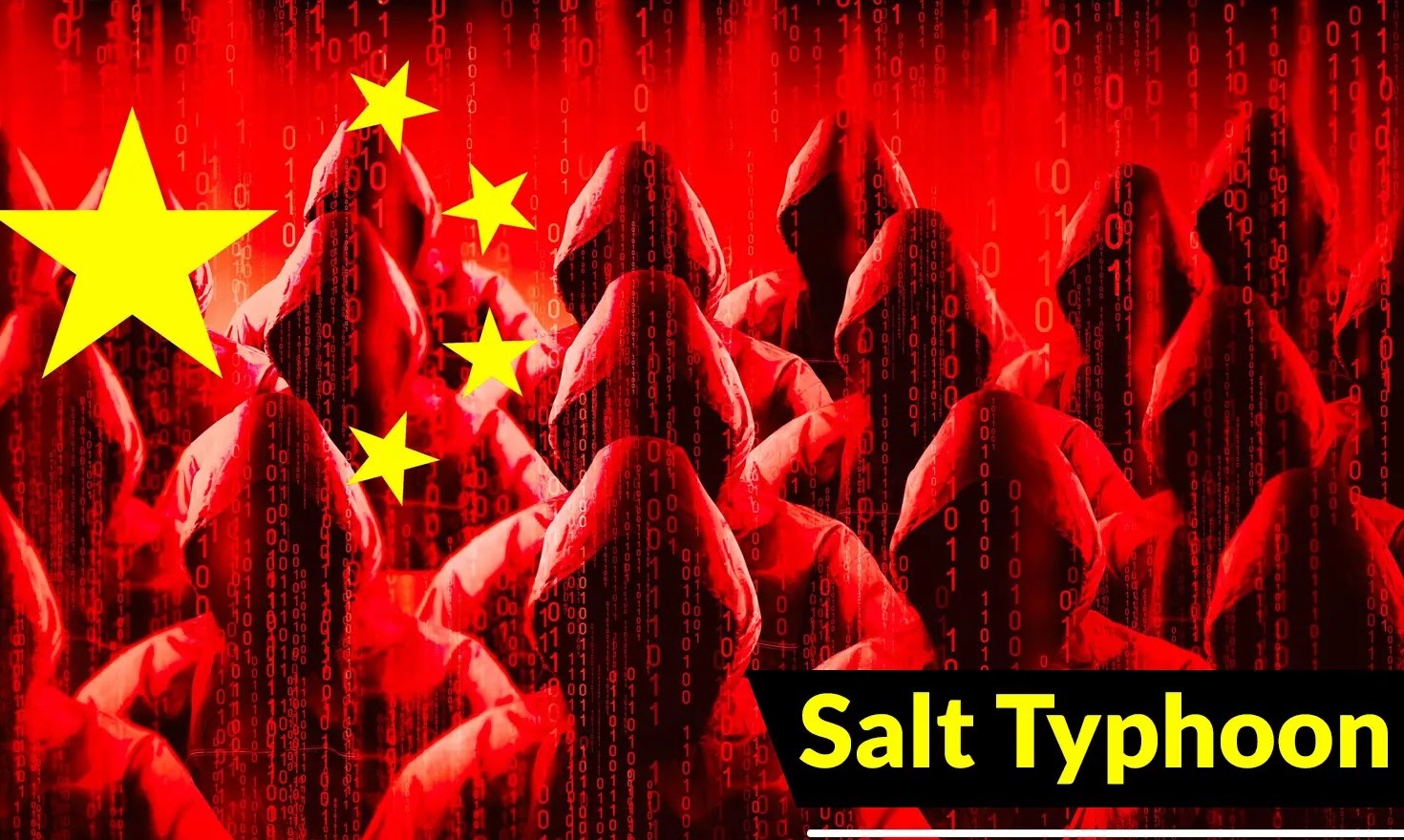
Chinese ‘Salt Typhoon’ Hackers Hijacked US National Guard Network for Nearly a Year
A chilling development recently surfaced, exposing a sophisticated cyberattack against a U.S. state’s Army National Guard network. For nearly a year, from March 2024 through December 2024, the persistent digital presence of Chinese state-sponsored hackers, identified as “Salt Typhoon,” went undetected. This brazen act of cyberespionage, revealed in a Department of Homeland Security memo, underscores the escalating threat posed by state-sponsored actors and the critical need for robust cybersecurity defenses within even highly secured government infrastructures.
Understanding the “Salt Typhoon” Threat Group
The “Salt Typhoon” designation refers to a highly capable Chinese state-sponsored hacking collective. While specific details about their modus operandi are often classified or emerge after an attack, their success in this instance points to a high level of sophistication, resources, and patience. Unlike opportunistic criminal groups, state-sponsored entities like Salt Typhoon typically execute campaigns with long-term strategic objectives, such as intelligence gathering, intellectual property theft, or pre-positioning for future offensive operations. Their ability to maintain persistence for such an extended period on a sensitive U.S. military network highlights a significant concern for national security.
The Anatomy of the Attack: Persistence and Evasion
The core of the “Salt Typhoon” campaign against the National Guard network appears to be focused on achieving and maintaining persistent access. This is a hallmark of advanced persistent threats (APTs). While the specific vulnerabilities exploited have not been publicly detailed, such long-term intrusions often involve a combination of techniques:
- Initial Compromise: This could range from phishing campaigns targeting personnel to exploiting known or zero-day vulnerabilities in network perimeter devices or applications.
- Lateral Movement: Once inside, attackers move across the network to identify and access valuable data or strategic control points. This often involves exploiting misconfigurations, weak credentials, or vulnerabilities in internal systems.
- Privilege Escalation: Gaining higher levels of access within the network to ensure free reign and access to sensitive information.
- Persistence Mechanisms: Establishing backdoors, creating new user accounts, or modifying legitimate software to ensure re-entry even if initial points of compromise are patched or discovered. This could involve techniques like installing rootkits or creating scheduled tasks.
- Data Exfiltration: Covertly siphoning off compromised data, often using encrypted channels or legitimate-looking traffic to avoid detection.
The nearly ten-month duration of the intrusion suggests exceptional stealth and evasion tactics, indicating a deep understanding of the target network’s security posture and the ability to adapt to any defensive measures.
Implications for National Security and Critical Infrastructure
The breach of a U.S. Army National Guard network carries grave implications:
- Intelligence Gathering: Access to military networks can provide adversaries with critical intelligence on troop movements, equipment, operational plans, and personnel data, compromising national security.
- Pre-positioning for Future Attacks: Persistent access allows adversaries to lay groundwork for future disruptive or destructive cyberattacks, potentially impacting military readiness or critical infrastructure during times of conflict.
- Erosion of Trust: Such breaches undermine public and international confidence in the security of government systems.
- Supply Chain Risks: Infiltrations can also be a stepping stone to compromise other interconnected systems or supply chain partners.
Remediation Actions and Best Practices
While the full details of the National Guard breach are not public, responding to and preventing such sophisticated APTs requires a multi-faceted approach. Organizations, especially those in critical infrastructure and government, must prioritize these actions:
- Aggressive Threat Hunting: Proactive searching for indicators of compromise (IOCs) and suspicious activity within the network, rather than solely relying on automated alerts.
- Enhanced Network Segmentation: Dividing networks into smaller, isolated segments to limit lateral movement if a breach occurs.
- Robust Endpoint Detection and Response (EDR)/Extended Detection and Response (XDR): Deploying advanced EDR/XDR solutions that can detect and respond to sophisticated threats at the endpoint and across the entire IT ecosystem.
- Vulnerability Management and Patching: Diligent and timely patching of all known vulnerabilities. While the specific CVEs exploited by Salt Typhoon in this incident are unknown, continuous monitoring is crucial. Organisations should ensure all systems are up to date, especially those related to common vulnerabilities like those found in VPNs (e.g., strong focus on CVE-2023-38831, which affects WinRAR, or other widely exploited vulnerabilities like CVE-2023-46805 and CVE-2024-21887 in Ivanti products).
- Strong Authentication and Access Controls: Implementing multi-factor authentication (MFA) everywhere possible and adhering to the principle of least privilege.
- Security Awareness Training: Regularly training employees on cybersecurity best practices, especially regarding phishing and social engineering attacks, as humans remain a common attack vector.
- Incident Response Planning and Tabletop Exercises: Developing and regularly testing a comprehensive incident response plan to minimize the impact of a breach.
Tools for Detection and Mitigation
Effective defense against advanced threats requires a combination of robust tools and skilled personnel. While no tool is a silver bullet, the following categories and examples are crucial:
| Tool Category/Name | Purpose | Link (Example) |
|---|---|---|
| Endpoint Detection & Response (EDR) / XDR Solutions (e.g., CrowdStrike Falcon, SentinelOne, Microsoft Defender for Endpoint) | Detecting and responding to sophisticated threats on endpoints, including advanced malware, fileless attacks, and malicious behaviors. | Various vendor sites |
| Security Information and Event Management (SIEM) (e.g., Splunk, IBM QRadar, Elastic Security) | Centralized collection and analysis of security logs from across the IT environment to identify anomalies and indicators of compromise. | Various vendor sites |
| Network Detection & Response (NDR) (e.g., Darktrace, Vectra AI) | Monitoring network traffic in real-time to detect suspicious patterns, lateral movement, and data exfiltration. | Various vendor sites |
| Vulnerability Scanners (e.g., Nessus, OpenVAS, Qualys) | Identifying known vulnerabilities in systems and applications that could be exploited by attackers. | Nessus |
| Threat Intelligence Platforms (TIP) (e.g., Anomali, Recorded Future) | Aggregating and analyzing threat intelligence to understand adversary Tactics, Techniques, and Procedures (TTPs) and proactively defend. | Various vendor sites |
Looking Ahead: The Evolving Landscape of Cyber Espionage
The “Salt Typhoon” incident serves as a stark reminder that state-sponsored cyberespionage is a persistent and growing threat. Organizations, particularly those in defense and critical infrastructure, must operate with the assumption that they are targets. A proactive, adaptive, and human-centric approach to cybersecurity, coupled with continuous investment in advanced defensive capabilities, is no longer optional but a fundamental prerequisite for national security and digital resilience.





